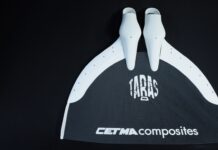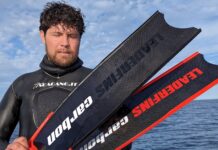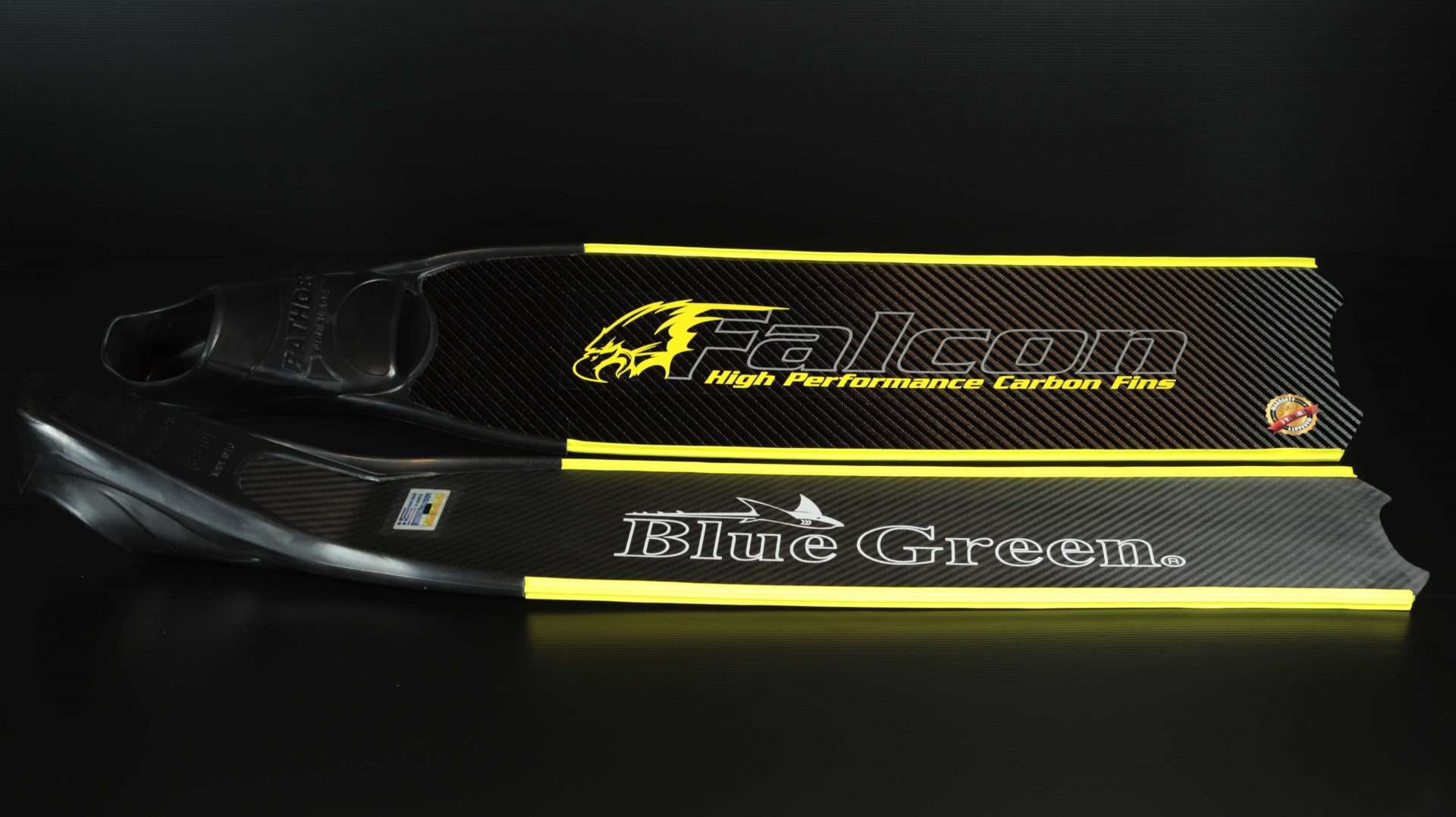We had analyzed the previous generation fins by Blue Green, the Advance Carbon, made utilizing technology with steel molds in autoclave at very high pressures and controlled temperature. Now Blue Green, both for the new Advance Carbon and all the carbon fiber blade fins, such as the ones we are presenting here, the Falcon Carbon fins, has used a different technology, the vacuum infusion that, according to Blue Green, has determined a big step forward in performance and reliability of the new generation fins by the Greek company.
Falcon Carbon fins external design
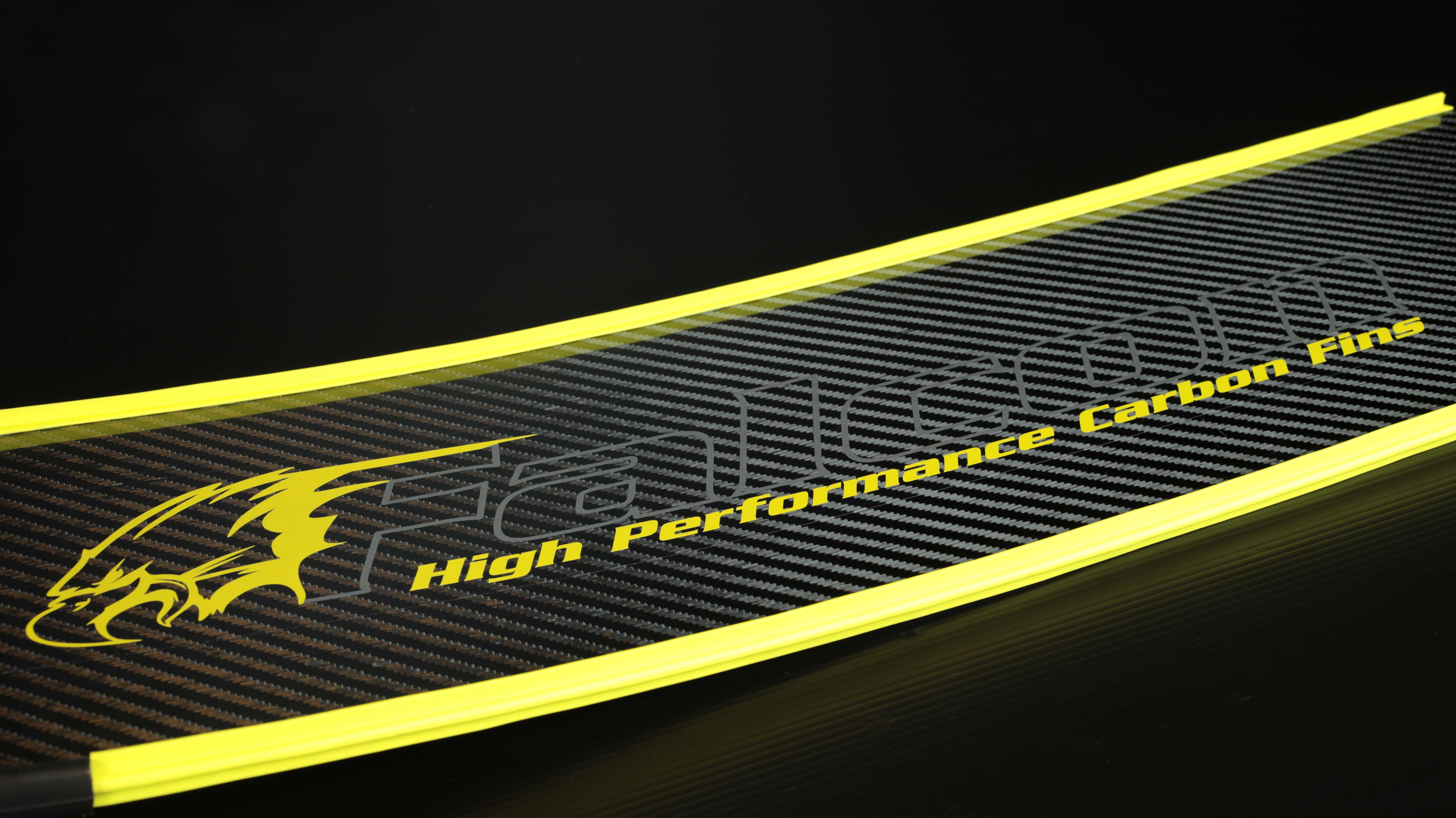
The Blue Green Falcon Carbon fins utilize the extremely well known and efficient Pathos footpockets, which have been designed specifically for composite blades. Falcon blades themselves show an upper surface which is glossy and extremely well refined, refined like the inferior surface, that is though totally different, with a matt and quite rough surface.

This solution has indeed not only a production reason, but also a performance one. In fact, the glossy surface has better friction reduction at certain speeds, while the matt rough surface functions better at other speeds, just like shark skin. The balance of the glossy and rough surface has been tested by Blue Green to be the best compromize between totally glossy and totally rough surfaces.
Water rails on Falcon Carbon fins are of reduced thickness and height to avoid interfering with the correct functioning of the blade, still generating that important effect of controlling and avoiding lateral water flow loss during kicking. Logerons of Pathos foot-pockets are cut to give more length and effect to the water rails.
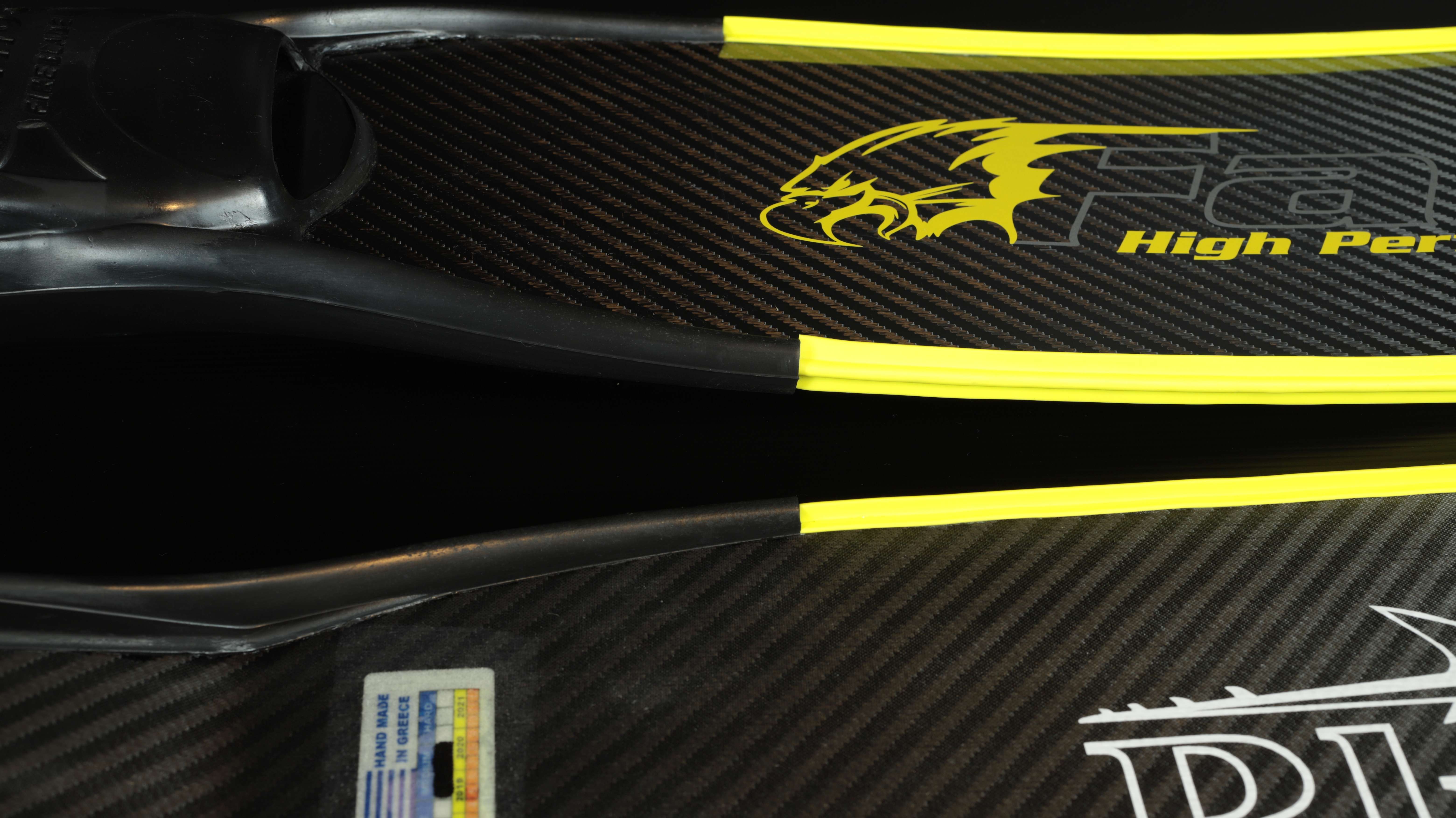
All the parts are glued together in a top level quality construction, which makes a big step compared to the previous blades by Blue Green. The only aesthetic point which is a little weak is the logo positioned with a transparent sticker on the glossy blade surface, instead of being fused in the resin.
Falcon Carbon fins materials and production
Blue Green Falcon Carbon fins blades are 100% 3K Carbon Aero, meaning material has aircraft quality standards. The top quality material is coupled with a net upgrade, according to Blue Green, in production standards, moving from steel molds in autoclave at very high pressures, to vacuum infusion at controlled temperature, and a production process that lasts up to 4 days, and determines a number of advantages, such as highest carbon to resin ratio, up to 75% carbon and 25% resin by weight, meaning lower weight and higher reactivity. Also, extremely reduced trapping of air bubbles in the resin and carbon, meaning net improvement of resistance and durability.
Falcon Carbon fins construction
Compared to the previous generation Advance Carbon fins, the new Falcon Carbon fins use of multiple and complex system of layers of carbon fiber which represent reinforcements that work as sort of ribs that allow to obtain a specific behavior which, according to Blue Green, gives their fins the best possible performance, especially in deep dives.
It is evident and visible, in fact, how Falcon Carbon fins blades have crossed layers of carbon fiber, but also specific lateral ribs on the two external sides of the blades, ribs that are more net from mid to tip of the blade. This specific solution is extremely clever, as it keeps weight low still increasing definately reactivity of the blade, as stiffness and reactivity depend from the squared value of the thickness of the total layers of carbon fibre.
The high level of materials used and the upgrade in construction is consistently confirmed by the increase of warrenty from 2 years of the previous generation blades by Blue Green to 3 years of the new ones.
Falcon Carbon fins dimensions and weight
Blue Green Falcon Carbon fins blades have important dimensions, especially in the length, as this aspect is surely a help for deep dives, as analyzed in our Super Test of fins, where it was evident how shorter fins give better acceleration, but lower top speed. Length is in fact 74.5 cm from the curve under the foot-pocket measured laterally, which is one of the top length on the market. Maximum width between the water rails is 18.2 cm, while angle between foot-pocket and blade increases of 1° compared to the old Advance Carbon, and is equal to 23°. Flap of the blade has a swallow tail profile.
Blades with water rails weigh 195 grams, while the entire fin with 42-44 Pathos footpocket weighs 695 grams.
Falcon Carbon fins flexion and reativity
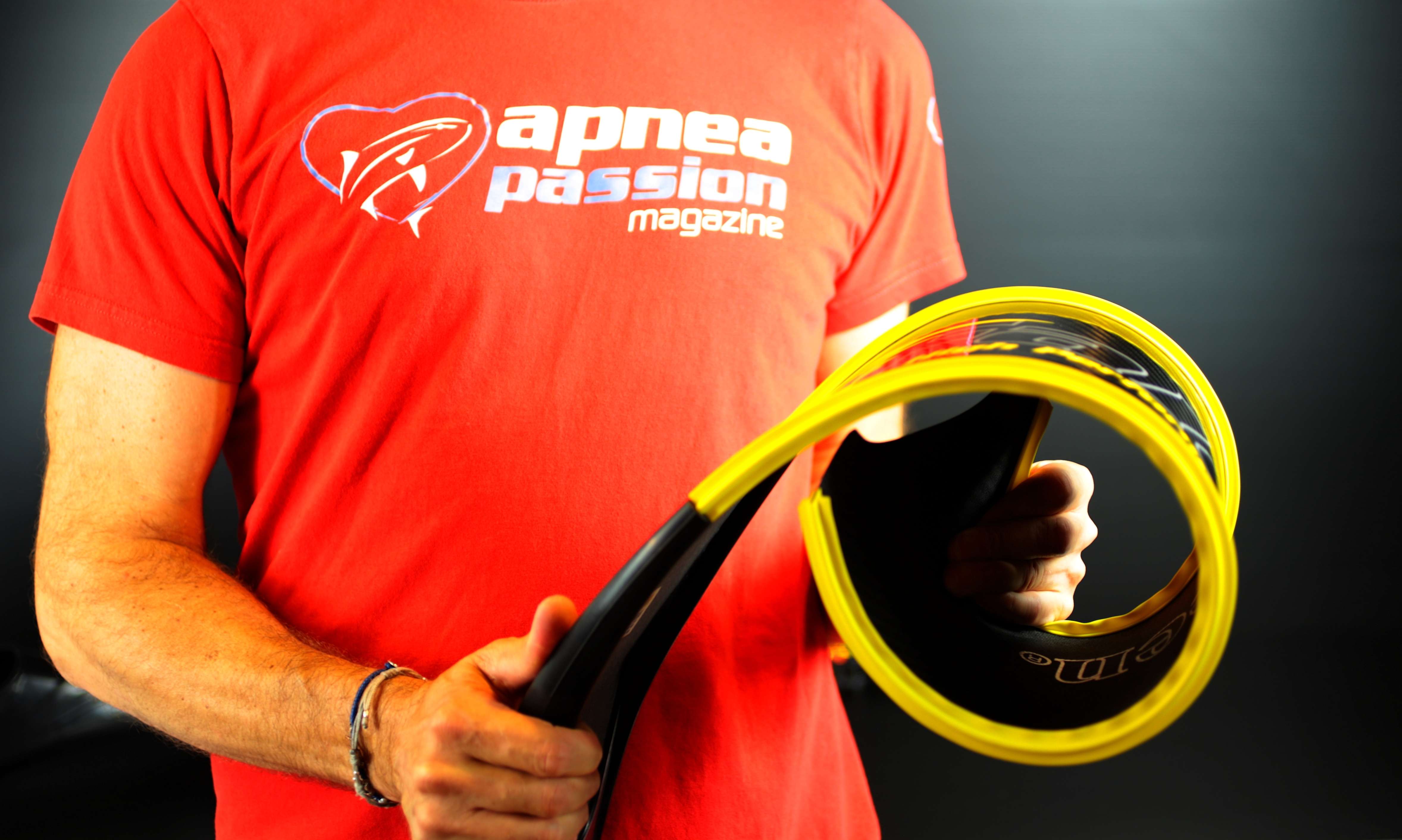
Blue Green Falcon Carbon fins flex with a parabolic curve, which is today considered the most efficient and effective solution, even though definately not the easiest to use, as indeed these fins are intended for experienced and skilled freedivers and spearos. The curve still is not costant along the blade, but shifted slightly towards the tip of the blade, as the first 25 cm from the tip of the foot-pocket are much stiffer than the rest of the blade. This is definately a characteristic that helps in deep dives, but can determine a slight performance reduction in surface transfers.
Stiffnesses available for Falcon Carbon fins blades are two, soft and medium, as well indicated in the badge under the blade, which also indicates year of production.

For complete data chart of Blue Green Falcon Carbon fins click here.



